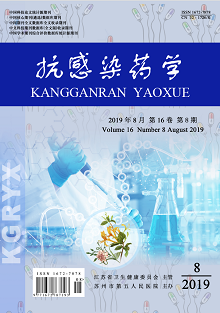MA Ping-kuan, LIU Xing, NONG Shao-hua, CHEN Jie
Objective: To investigate the situation of anti-tuberculosis drug treatment in pulmonary tuberculosis patients in hospital, and to analyze the monitoring results and influencing factors of serum isoniazid (INH) concentration in pulmonary tuberculosis patients, so as to provide a reference for rational drug use in clinic. Methods: The data of 198 hospitalized patients from October 2018 to March 2019 were retrospectively analyzed. The blood concentration of INH in the anti-tuberculosis drug treatment regimen (INH 0.3 g, q24h; RFP 0.6 g, q24h; PZA 0.5 g, q8h; EMB 0.75 g, q24h), the results and its influencing factors were analyzed. Results: Among 198 patients, 93 patients took INH (300 mg/d) for 2 hours and their blood drug concentration was lower than the target concentration range accounted for 46.97%. Among them, 59.17% of male patients had low blood drug concentration, which was higher than 28.21% of female patients (P<0.05); 52.08% of patients whose body weight was more than 50 kg had low blood drug concentration in INH. 44); 33.33% of patients with body mass was less than 50 kg (P<0.05); there was a significant difference between serum albumin level and isoniazid concentration (P<0.05); 40.00% of patients with liver function injury had low serum concentration of INH was (3.18±3.02)mg/L of patients with mild injury and 4.92% of patients with moderate injury. The serum concentration of (4.92±2.81) mg/L and (8.10±5.44) mg/L in patients with severe injury was significantly different among the three groups (P<0.05). Conclusion: After taking isoniazid, the blood concentration of tuberculosis patients will be affected by sex, body weight, complications and other factors. Therefore, the monitoring of blood concentration of anti-tuberculosis drugs is helpful to the clinical treatment of individualized drugs, so as to effectively improve the therapeutic effect.
